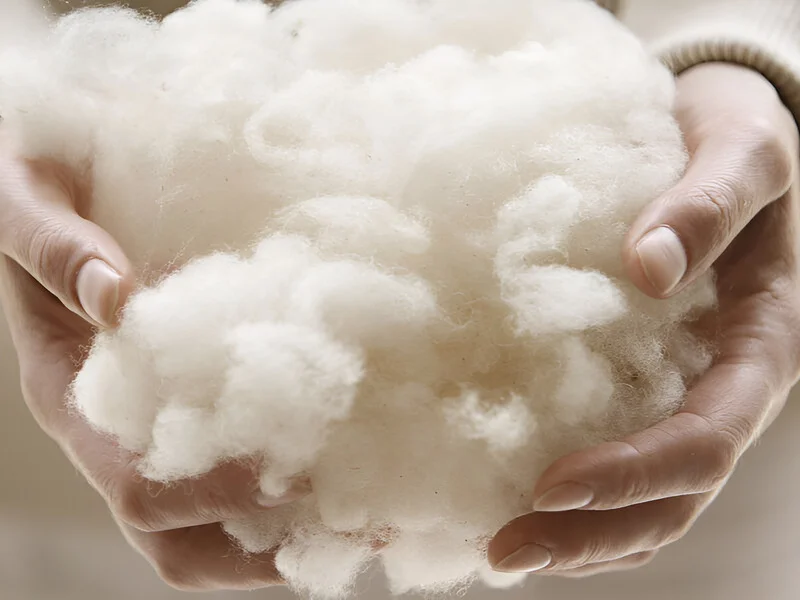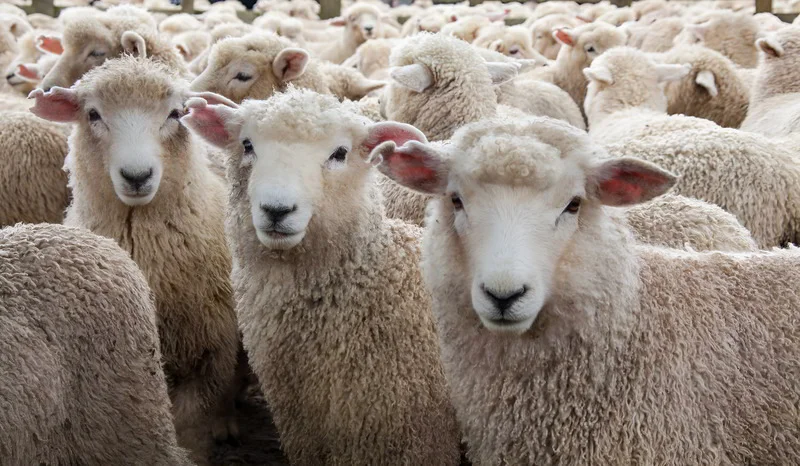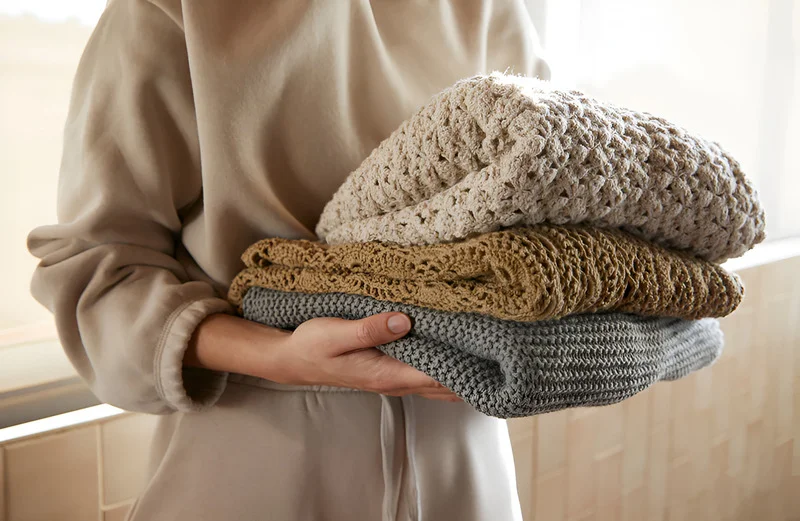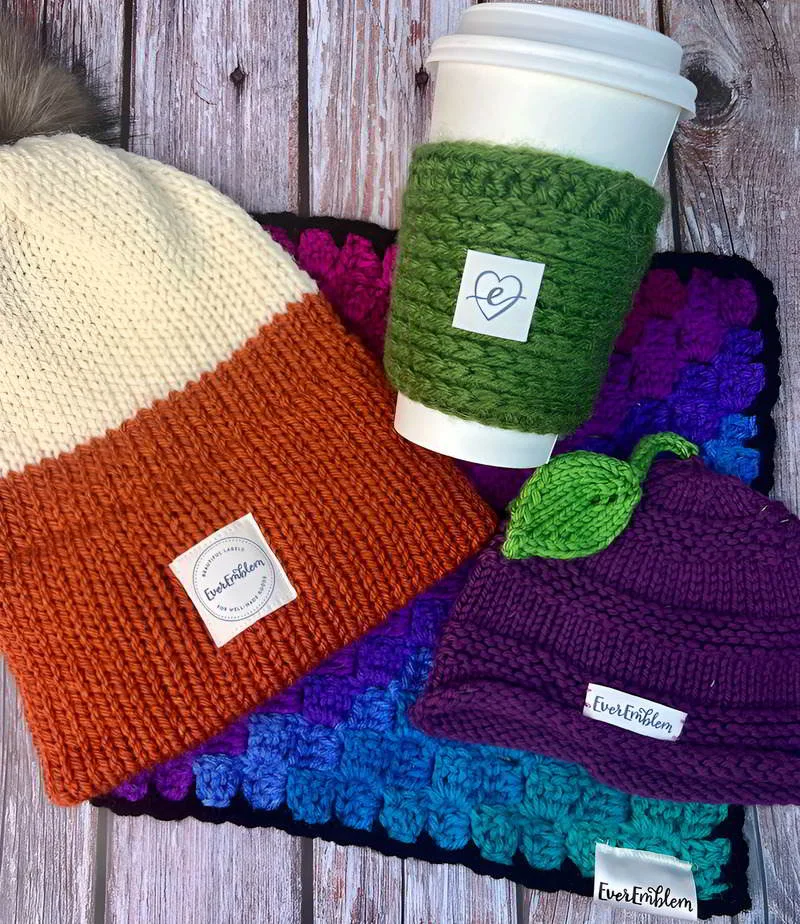What is Wool: Simple Guide to Fiber, Types, Care And Uses
Wool is a natural material that many of us know. You might have a warm sweater or cozy socks made from wool. Wool is special because it comes from animals. It helps keep the animals, and us, warm when it’s cold outside.
This article will help you learn all about wool in simple words. We will explore what wool fiber is and discover interesting facts about wool fabric. We want to make it easy for everyone to understand this amazing material.
1. Definition of wool
Wool is a natural fiber. This means it comes from nature. It is not made by people in a factory. Wool grows on animals, mostly on sheep. You can think of wool as the “hair” or “fleece” of an animal. This fleece is what keeps the animals warm in cold weather.
People have used wool for a very, very long time. They have used it to make clothes and other things for thousands of years. It is one of the oldest fibers humans have used.
So, the simple definition of wool is: a natural hair from animals, like the fleece of sheep or other woolly creatures. It’s a type of natural animal fiber. The term sheep fleece specifically refers to the wool coat of a sheep.

2. Why do people like wool?
People like wool for many good reasons. It has special qualities, or wool properties, that make it great for different things. They are part of its natural fiber characteristics.
Here are some good things about wool:
- Keeps you warm: Wool fibers are crimped, meaning they have little waves. These waves trap tiny pockets of air. This trapped air helps keep your body heat in, so you stay warm when it’s cold.
- Can be soft: Wool can be very different to the touch. Some types of wool are incredibly soft and feel nice against your skin. Other types can be coarser.
- Strong and lasts long: Wool fibers are surprisingly strong. They can bend many times without breaking. This means wool clothes can last a long time if you take good care of them.
- Slightly water-resistant: Wool can keep out small amounts of water, like a light drizzle. It can also absorb some moisture before it starts to feel wet to the touch.
- Breathes well: Wool is “breathable.” This means it lets air pass through it easily. Moisture from your sweat can escape, helping you avoid feeling too sweaty or clammy.
- Stretchy: Wool fibers have a natural wave or “crimp.” This makes wool fabric stretchy. It can also return to its original shape after being stretched.
3. Where does wool come from?
Wool mainly comes from animal fiber from sheep. But other animals also give us wool. The specific fiber origin changes how the wool feels and what it’s good for.
Here are the main animals that give us wool:
- Sheep: This is the most common animal for wool. The wool is often just called “wool” or sheep fleece. There are many different kinds of sheep, and they produce different kinds of wool.
- Cashmere goats: These goats give us a very soft and fine wool called Cashmere. It is known for being luxurious and is often expensive.
- Angora goats: These goats give us Mohair. Mohair is shiny, strong, and often used for fuzzy sweaters or durable upholstery.
- Alpacas: Alpaca wool is very soft, warm, and has a silky feel. Many people who find sheep’s wool itchy can comfortably wear Alpaca wool.
- Angora rabbits: These rabbits give us Angora wool. Angora wool is extremely soft, fluffy, and very light.
- Other animals: Some other animals also provide woolly fibers. These include camels (their hair is used for warm coats and blankets) and llamas (similar to Alpaca, but can be a bit coarser).

4. Common types of wool
Because wool comes from different animals and different breeds of sheep, there are many wool types (e.g., Merino, Lambswool). Each type feels different. Each type is used for different things. The texture and feel (e.g., soft, fine, coarse) of the wool are very important.
Here are some common types of wool:
- Merino wool: This wool comes from Merino sheep. It has very fine (thin) fibers, making it very soft. Merino wool is great for clothes worn next to the skin, like base layers, soft sweaters, and socks.
- Lambswool: This is wool from a young sheep’s first shearing. The sheep is usually around seven months old. Lambswool is very soft, smooth, and stretchy. It is often used for good quality sweaters.
- Cashmere: This wool comes from Cashmere goats. It is known for being incredibly soft, light, and luxurious. It is usually more expensive than other wools.
- Angora wool: This wool comes from Angora rabbits. It is extremely soft, fluffy, and warm. Items made from Angora wool are very delicate and need special care.
- Alpaca wool: This wool comes from alpacas. It is warm and soft, with a silky feel. Many people who find sheep’s wool itchy can wear Alpaca wool without problems.
- Shetland wool: This wool comes from sheep raised on the Shetland islands in Scotland. It is known for being warm and very durable (long-lasting). It can be a bit rougher than Merino wool. It is great for warm, sturdy sweaters that can last for years.
It’s good to know that different wools have different feelings and uses. Some are super soft, perfect for baby clothes. Others are tough and strong, ideal for carpets or warm winter coats.
5. What do we make with wool?
Wool is used to make many different things. This is because it’s warm, strong, and can be very soft. It’s a favorite textile (a type of cloth or woven fabric) for clothes and items around the home.
Here are some common uses for wool:
Clothes:
- Sweaters and cardigans: This is what many people think of first – cozy knitwear like wool sweaters.
- Socks: Warm wool socks are perfect for winter.
- Suits and trousers: Finer types of wool are used for smart clothes. Wool helps these clothes hang well and resist wrinkles.
- Coats and jackets: Thicker wools are used to make warm winter coats and jackets.
- Hats, scarves, and gloves: Wool is great for winter accessories to protect you from the cold.
Home Goods:
- Blankets and throws: Wool blankets are warm and cozy for beds or sofas.
- Carpets and rugs: Wool is durable, making it a good choice for carpets and rugs that can last many years.
- Upholstery: Some wool is used to cover furniture because it’s strong and resists wear.
Crafts:
- Yarn: Wool is spun into yarn. This yarn is then used for knitting, crocheting, or weaving by hand or machine.

6. Looking after your woolies
Wool items can last a very long time if you take good care of them. Garment care for wool is important because it needs special attention (e.g., gentle washing, as it’s susceptible to shrinking/felting). Felting is when fibers matt together and harden.
Here are some simple tips for looking after your wool items:
- Read the label: This is the most important step! Always check the care label on the garment first. It will have instructions like care instruction: hand wash, care instruction: dry clean only, care instruction: lay flat to dry.
- Washing: Often, the best way is to hand wash wool. Use cool or lukewarm water. Use a special wool soap or a very mild detergent. Be gentle. Do not rub or twist the wool harshly. Some wool items can be machine washed. If the care label says it’s okay, use the gentle or wool cycle on your washing machine. Always use cold water.
- Drying: Do not wring or twist wool to get water out. Gently squeeze out the extra water. Lay flat to dry. Place the wool item on a clean towel on a flat surface. Gently reshape it if needed. Keep it away from direct sunlight or heat sources like radiators. Do not hang wet wool, as this can stretch it out of shape.
- Storing: Make sure wool items are clean before you store them for a long time (like over the summer). Use moth protection, like cedar balls or lavender sachets, when storing wool. Moths like to eat wool fibers.
Taking care of wool properly is important. If you wash or dry it the wrong way, it can shrink (get smaller) or felt.
7. Why knowing about wool is useful for products
Understanding wool is helpful for everyone, especially when choosing products or creating brand labels and product information. This includes people who buy wool products, and people who make or sell them.
Knowing different wool types and wool properties helps people choose the right product. It helps them know how warm it will be, how it will feel, and how to care for it.
For those who make or sell wool products, like handmade knitwear or fashion apparel, it’s very important to share correct information. This means clear labeling for wool items. This can be done with sew-on woven labels (labels made by weaving threads together, like on clothing necklines) or custom hang tags (tags attached to a product, often with string). Labels should include the wool type (for example, “100% Merino Wool”), the fiber origin (where the fiber comes from, like “Made with Peruvian Alpaca”), and clear care instructions.
The key texture/feel (e.g., soft, fine, coarse – influences label choice) of the wool also helps in picking a label material. For very soft garments, you want a label that won’t irritate the skin. For example, choosing soft Printed Satin Care Labels is a good idea for delicate woolens.
Why is this important?
- It helps customers choose wisely.
- It guides them on what information to include on a wool product tag for proper garment care.
- Good labels build trust with customers.
- They help wool items last longer when people know how to care for them.
- Understanding fiber content for accurate product tagging ensures honesty and transparency.
Packlove knows that clear and accurate labels are essential, especially for natural fibers like wool that require specific care. Choosing the right label material, like soft Printed Satin Care Labels or durable woven labels, makes a big difference to the final product and customer experience.

8. Wool in a nutshell
Let’s quickly remember the main things about wool:
- Wool is a natural fiber from animals, mostly sheep.
- It is famous for keeping things warm. It can also be soft, strong, and last a long time. These are key facts about wool fabric.
- Wool is used for warm clothes like sweaters and socks. It’s also used for blankets and carpets.
- It’s important to care for wool items properly so they don’t shrink or get damaged.
9. Your wool questions answered
Here are answers to some common questions about wool.
9.1 Is all wool itchy?
No, not all wool is itchy. Some types of wool, like Merino wool and Cashmere, have very fine and soft fibers. These usually don’t feel itchy against the skin.
Other wools, which have coarser or thicker fibers (like some traditional Shetland wools), can feel itchy to some people. The key texture/feel really depends on the breed of sheep and how the wool is processed.
9.2 Can I put wool in the washing machine?
Usually, it’s best to hand wash wool or have it dry-cleaned. Always check the care label first! This is very important.
Some wool items are specially treated so they can be machine washed. If so, use a gentle wool cycle with cold water. If the label says care instruction: hand wash or care instruction: dry clean only (meaning it should only be cleaned by a professional dry cleaner), you must follow those instructions to avoid damaging the item.
9.3 Is wool good for the environment?
Wool is a natural fiber. This means it is renewable. Animals grow their fleece back each year. Wool is also biodegradable, meaning it can break down naturally in the earth over time.
Farming practices can be different from place to place. But overall, wool is often seen as more sustainable than many synthetic (man-made) fibers. This is good to know if you are looking for eco-friendly label options for wool garments.
9.4 What is the difference between “wool” and “yarn”?
“Wool” is the raw fiber that comes from the animal’s fleece. It’s the fluffy stuff shorn from the sheep or other animal.
“Yarn” is what you get after these wool fibers (or other fibers like cotton or acrylic) are cleaned, carded (combed to align the fibers), and spun into a long, continuous strand. This yarn is then used for knitting, crocheting, or weaving to make fabric or garments. So, wool is the basic material, and yarn is a product made from it, ready for crafting.
Explore more:
Wool is a wonderful natural material. People value it for its warmth, its softness (in many types), and its ability to last a long time. Understanding a bit about wool helps everyone. It helps you choose the right wool items, use them well, and care for them better. For those who create or sell wool products, remember that clear, accurate labels are very important. Labels that show the type of wool and give good care instructions make for happy customers. They also help keep beautiful wool garments looking great for years.
Ready to elevate your wool products with labels that truly reflect their quality? Packlove offers expert design advice and a wide range of custom labels, from soft satin care tags to elegant woven brand labels. Explore our full selection of custom branding solutions, including hang tags, woven labels, and care labels perfect for wool and other natural fibers, at Packlove.






















